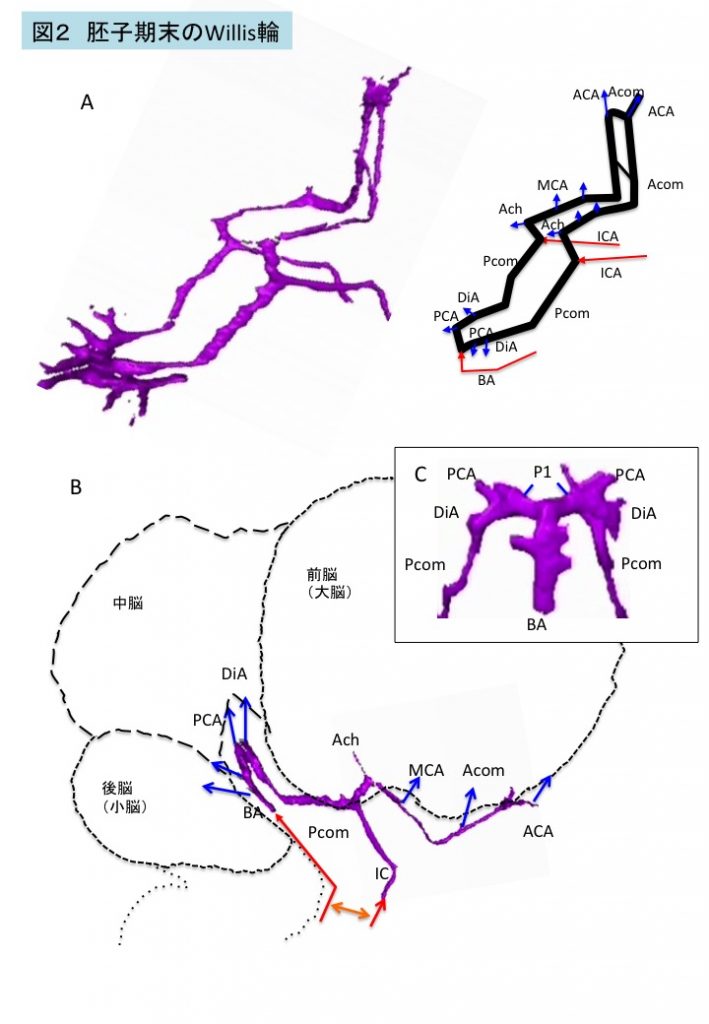
古市さんの卒論がAnat Recに掲載されました。
連続組織切片の 3-D 再構成を行い、胚子期末のWillis 輪( CW )の形成を検討しました。
- CW は胚子期末のすべての標本で閉鎖、
- CWは単一の平面でなく、複数の階段状の平面で構成
- 中脳と間脳の屈曲を反映してCW は尾部で急激に湾曲
- 85%(17/20)でvariation観察
- (anterior partのみ10例、anterior+posterior 6例、posteriorのみ1例)
- 観察されたvariationは、胎児、新生児、成人で報告されているものと同様
- CWのvariationが開始時期から存在することを示唆
33. Furuichi K, Ishikawa A, Uwabe C, Makishima H, Yamada S, Takakuwa T,
Variations of the circle of Willis at the end of the human embryonic period, 2018, 301, 1312-1319, doi:10.1002/ar.23794
ABSTRACT
Variations of the circle of Willis (CW) influence blood supply to the brain and adjacent structures in adults. We examined the formation of the CW in 20 human embryo samples at the end of the embryonic period using 3-D reconstructions of serial histological sections. The CW was closed in all samples, and did not form in a single plane, but was composed of multiple stair-like planes. The artery acutely curved at the caudal part of the CW, namely, at the inlet of the basilar artery and bifurcation of the P1 segment of the posterior cerebral artery (PCA), reflecting flexure of the mesencephalon and diencephalon at this stage. Variations were observed in 17 of 20 samples—only anterior parts (anterior communicating artery [Acom] and anterior cerebral artery [ACA]) in 10 samples, only posterior parts (posterior communicating artery [Pcom]) in one sample, and both anterior and posterior parts in six samples. Variations included the Acom formed as partially duplicated in three samples, duplicated in four, plexiform in three, and no channel as a result of a single azygos ACA in one. The ACA formed as duplicated in two, median ACA in two, and right hypoplasia in one. The Pcom formed in hypoplasia of either side in six samples. Variations observed in this study are similar to those observed in fetuses, neonates, and adults. The P1 segment of PCA was very large in all samples. The present observations indicate that variations in the CW are present from the initiation of CW formation.







